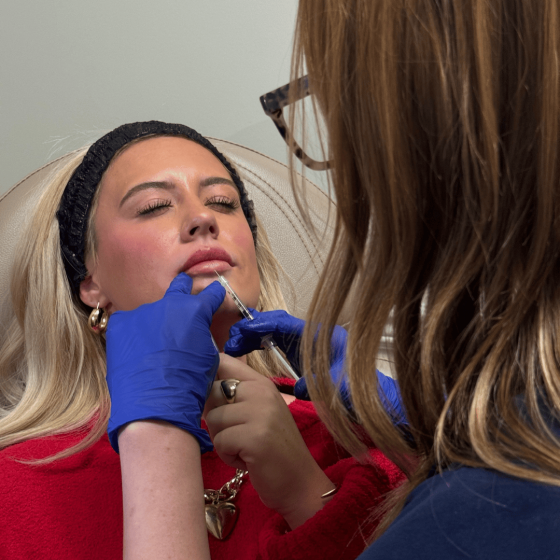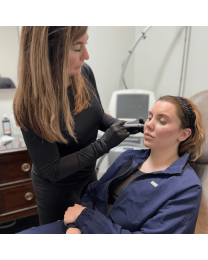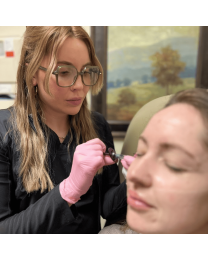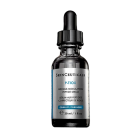| FAQs |
What is RHA® 2?
RHA® 2 is an injectable gel (also called a dermal filler) used to treat facial wrinkles and folds. It is injected in the moving (dynamic) area of the face, especially between the nose and corners of the mouth (nasolabial folds) (see Figure 1). It is approved for use in adults over 22 years of age. RHA® 2 is produced with hyaluronic acid (HA), using advanced technology to obtain a soft and long-lasting injectable gel to smooth facial wrinkles and folds. The HA of the gel is made from a non-animal source. RHA® 2 contains a small amount of an anesthetic medicine (lidocaine), to help reduce discomfort during injection. Hyaluronic acid (HA) is a naturally occurring substance found in the human body. Your body’s own HA helps maintain the skin’s structure and its natural feel.
Are there any reasons why I should not receive RHA® 2?
Your doctor will ask about your medical history to see if RHA® 2 is right for you. You should not use RHA® 2 if you have a history of:
• severe allergic reactions (anaphylaxis) or history or presence of multiple severe allergies. An injection of RHA® 2 may result in an allergic reaction.
• allergic reactions to the material (from Streptococcus equi) used to make the HA in RHA® 2. An injection of RHA® 2 may result in an allergic reaction.
• allergic reactions to lidocaine or other similar substances used to reduce pain. An injection of RHA® 2 may result in an allergic reaction.
• bleeding disorders. Any injection, including RHA® 2 and other dermal fillers, may result in a higher risk of bruising or bleeding in the treated area.
What were the common treatment reactions seen in the clinical study?
Most patients (85% or 61 out of 72 patients) experienced a common treatment reaction following their injection. Some patients experienced more than one. The expected reactions at the injection site are:
• Bruising
• Firmness
• Swelling
• Pain
• Tenderness
• Redness
• Lumps/bumps
• Change of skin color
• Itching
Do the injections hurt?
Injections may cause some pain during and after the procedure. Your doctor will discuss different options for pain management with you. RHA® 2 contains an anesthetic medicine (lidocaine) to help reduce
injection site pain. This pain is temporary and usually lessens within a few minutes. To prevent or reduce pain from the injection, your doctor may use ice packs, or another anesthetic, both before and after the
injection.
What happens during the treatment?
RHA® 2 is slowly injected into the facial skin in small amounts until your doctor sees the desired result which creates a more youthful appearance of the face. For most patients, the procedure only takes
15-30 minutes. Once your doctor has finished injecting the treatment area, he/she may gently massage your face to help smooth and distribute the gel evenly. Your doctor may also apply an ice pack to help decrease swelling and pain.
The amount of RHA® 2 used depends on the depth of your wrinkles and your treatment goals. The right amount to be injected will be decided by your doctor during the procedure. Injection of additional RHA® 2 (touch-up treatment) may be needed 2 to 4 weeks after the initial treatment to achieve the desired aesthetic outcome. In the clinical study, 64% of the patients received a touch-up treatment 2 weeks after initial treatment to achieve their desired results. Your doctor will decide how much RHA® 2 is needed for the touch-up treatment.
What happens after the treatment?
Your doctor may advise you to apply cold compresses to the treated area to help reduce pain and swelling. To prevent injury, ask your doctor how long you can leave ice packs on the treated area. Be aware that numbness, short-term loss of touch or feeling, and tingling around the injection area may occur due to the numbing medicine (anesthetic). It usually goes away within a few hours. Due to this numbness, you may not have a normal feeling of hot or cold in this area.
Ask your doctor about any limits for exercising and exposure to sun, cold, or heat (sauna, steam room). Exposure to any of these for the first 24 hours may increase short-term redness, swelling, and/or itching at
the injection site.
You should ask your doctor when make-up may be applied after your treatment. Using make-up too soon may increase the risk of infection or change in skin color.
Most common treatment reactions like bruising, firmness, swelling, pain, tenderness, redness, lumps/bumps, change of skin color, and itching go away on their own within a few days, but your doctor may choose to treat them with medications. |










